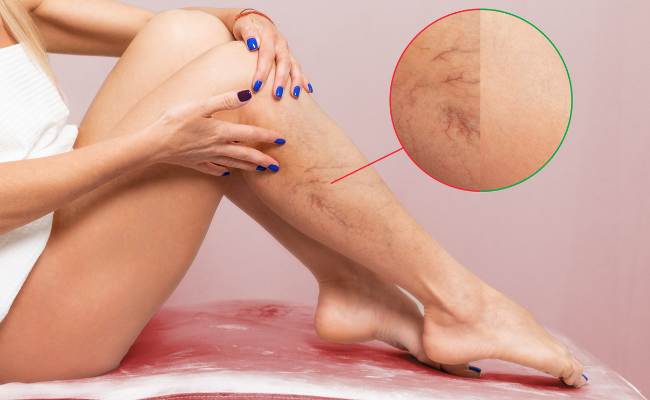How to Treat Varicose Veins?
- November 06, 2023
- No Comments

What are Varicose Veins?
Varicose veins are the result of enlarged and twisted blood vessels that often manifest as swollen, raised, blue, or dark purple bulges on the skin's surface, primarily occurring in the legs. This condition arises from weakened or damaged vein walls and malfunctioning valves, leading to the accumulation of blood and the distortion of the veins. These enlarged and twisted blood vessels can cause discomfort or itching. Additionally, smaller red or purple lines, known as spider veins, often accompany varicose veins and appear close to the skin's surface in the legs, feet, and ankles.
Why Do Varicose Veins Occur?
Several factors contribute to the development of varicose veins. Family history, age, gender, pregnancy, obesity, and prolonged periods of standing or sitting can increase the risk. The condition is more prevalent in women and tends to worsen with age. Weakness in the vein walls or valves can be inherited, making some individuals more susceptible to varicose veins.
How are Varicose Veins Diagnosed?
Diagnosing varicose veins typically involves a physical examination by a healthcare professional. The doctor may ask about symptoms, family history, and lifestyle factors. In some cases, imaging tests such as ultrasound may be used to get a more detailed view of the veins and assess blood flow.
Treatment Solutions for Varicose Veins
- Lifestyle Modifications: Making certain lifestyle changes can help manage varicose veins. Regular exercise, maintaining a healthy weight, and avoiding prolonged periods of sitting or standing can improve circulation and alleviate symptoms.
- Compression Stockings: Compression stockings are often recommended to improve blood flow in the legs. These stockings apply pressure to the legs, helping the veins work more efficiently and reducing the symptoms of varicose veins.
- Elevating the Legs: Elevating the legs can assist in reducing swelling and improving blood circulation. Elevating the legs above the heart level for short periods throughout the day can be particularly beneficial.
- Sclerotherapy: Sclerotherapy is a minimally invasive procedure that entails injecting a solution directly into the targeted veins. This solution irritates the blood vessels' lining, leading them to collapse and gradually disappear. This method is commonly employed for treating smaller varicose veins and spider veins.
- Endovenous Laser Treatment (EVLT): EVLT is a procedure that uses laser energy to seal off the affected veins. A thin laser fiber is inserted into the vein, and the heat generated by the laser closes the vein, redirecting blood flow to healthier veins.
- Ambulatory Phlebectomy: In this outpatient procedure, small incisions are made to remove smaller varicose veins close to the surface of the skin. It is particularly effective for treating bulging veins near the surface.
- Radiofrequency Closure: This procedure involves using radiofrequency energy to heat and seal the affected vein. Similar to EVLT, radiofrequency closure redirects blood flow to healthier veins.
Benefit Points of Varicose Vein Treatment
- Symptom Relief: Treatment of varicose veins can alleviate symptoms such as pain, swelling, and discomfort associated with the condition. This contributes to an improved quality of life for individuals experiencing these symptoms.
- Prevention of Complications: Varicose veins, if left untreated, can lead to complications such as venous ulcers, blood clots, or chronic venous insufficiency. Timely intervention helps prevent these complications and promotes overall vascular health.
- Improved Aesthetics: Many individuals seek treatment for varicose veins for cosmetic reasons. Addressing the veins through various treatments can improve the appearance of the legs, boosting self-esteem and confidence.
- Enhanced Circulation: Treatment solutions aim to improve blood circulation in the legs, reducing the pooling of blood in the affected veins. This not only alleviates symptoms but also promotes overall cardiovascular health.
- Minimally Invasive Options: The availability of minimally invasive procedures, such as sclerotherapy or endovenous laser treatment, provides effective alternatives to traditional surgery. These options often involve less pain, shorter recovery times, and fewer complications.
Comments (0)